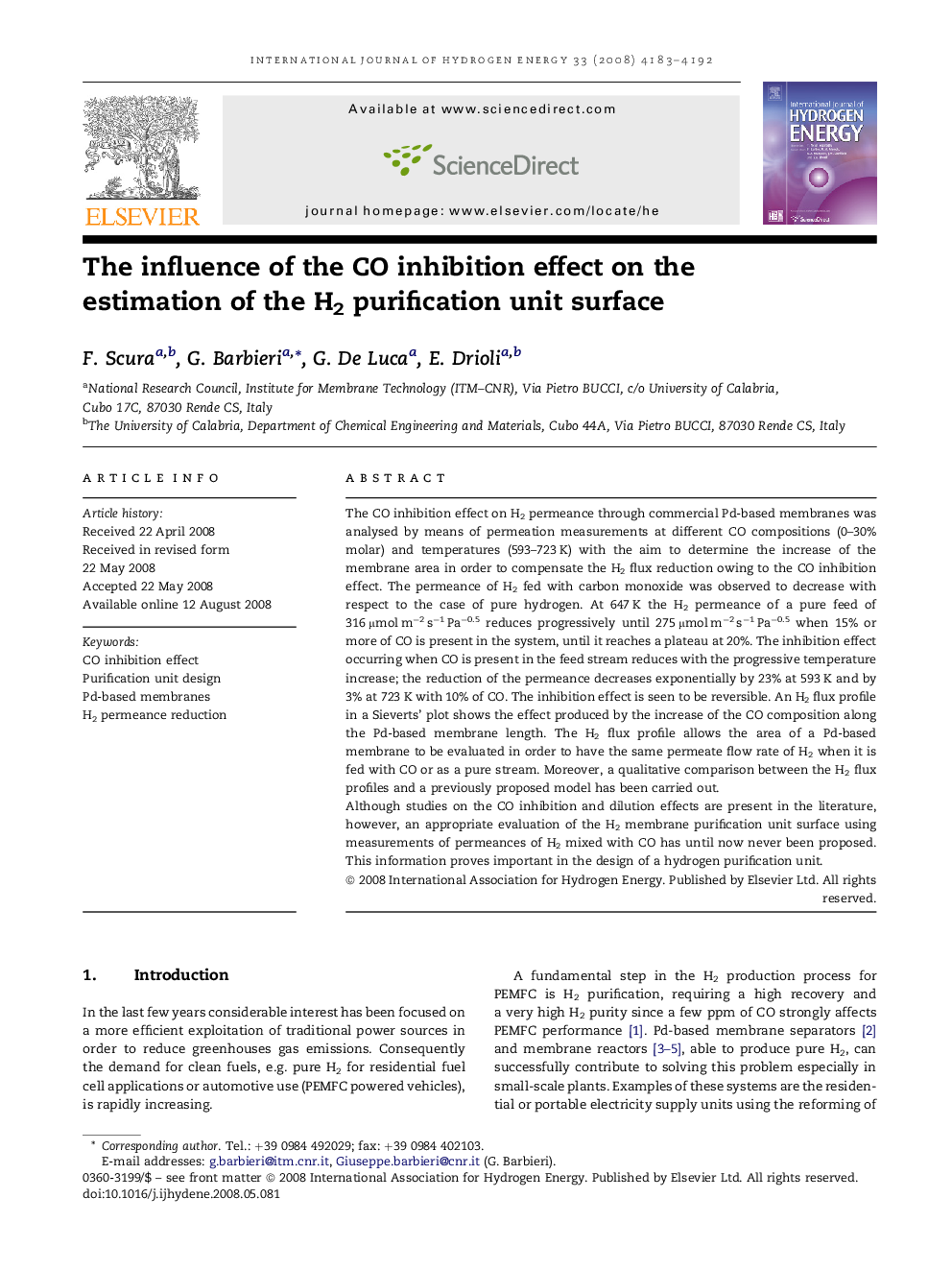| Article ID | Journal | Published Year | Pages | File Type |
|---|---|---|---|---|
| 1278867 | International Journal of Hydrogen Energy | 2008 | 10 Pages |
The CO inhibition effect on H2 permeance through commercial Pd-based membranes was analysed by means of permeation measurements at different CO compositions (0–30% molar) and temperatures (593–723 K) with the aim to determine the increase of the membrane area in order to compensate the H2 flux reduction owing to the CO inhibition effect. The permeance of H2 fed with carbon monoxide was observed to decrease with respect to the case of pure hydrogen. At 647 K the H2 permeance of a pure feed of 316 μmol m−2 s−1 Pa−0.5 reduces progressively until 275 μmol m−2 s−1 Pa−0.5 when 15% or more of CO is present in the system, until it reaches a plateau at 20%. The inhibition effect occurring when CO is present in the feed stream reduces with the progressive temperature increase; the reduction of the permeance decreases exponentially by 23% at 593 K and by 3% at 723 K with 10% of CO. The inhibition effect is seen to be reversible. An H2 flux profile in a Sieverts' plot shows the effect produced by the increase of the CO composition along the Pd-based membrane length. The H2 flux profile allows the area of a Pd-based membrane to be evaluated in order to have the same permeate flow rate of H2 when it is fed with CO or as a pure stream. Moreover, a qualitative comparison between the H2 flux profiles and a previously proposed model has been carried out.Although studies on the CO inhibition and dilution effects are present in the literature, however, an appropriate evaluation of the H2 membrane purification unit surface using measurements of permeances of H2 mixed with CO has until now never been proposed. This information proves important in the design of a hydrogen purification unit.
